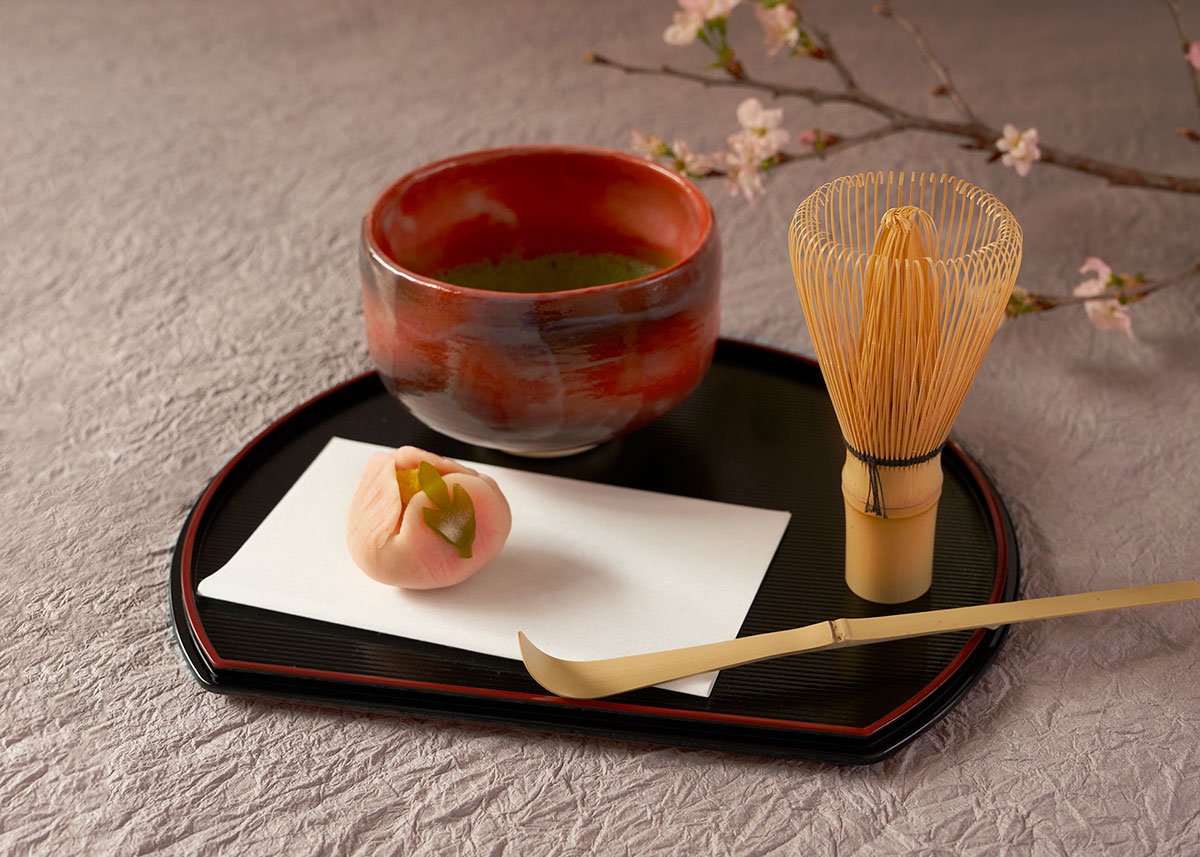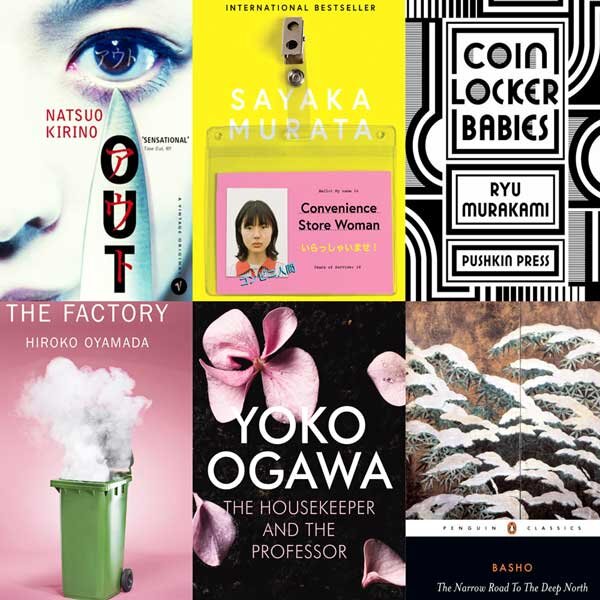What is Wagashi? 7 Things to Know About Traditional Japanese Sweets
by Michele Tanabe | CRAFT
Raku Pottery Tea Set, available at Japan Objects Store
If you’ve got a sweet tooth and an appreciation of traditional Japanese culture, then wagashi might be your next obsession. These exquisite traditional Japanese candy are not only steeped in rich cultural heritage and artistry, but also provide a captivating glimpse into the centuries-old tradition of Japanese sweets.
Read on for a cohesive guide to the origins of wagashi, including their rich history, variations, and where to find these tiny but delicious treats inside and outside of Japan.
1. What is Wagashi?
Wagashi. Image by Sayama
Wagashi are traditional Japanese confections, typically made from various types of rice or wheat flour, sugar, nuts, beans and starches. The word wagashi (和菓子) literally means Japanese (wa) sweets (kashi). One of the first references to wagashi in history dates back to the 6th century, where the influence of Buddhism from China began to merge with Japanese culture. Some of the sweets introduced were called karakashi or karakudamono, and were the first sweets of their kind to be fried in oil in Japan.
These sweets were specifically circulated among the royal court and religious figures, or were used as offerings, and they were not common among the general public. Once sugar became more widespread during the Edo period (1603-1867), wagashi became much more popular among commoners, and specialty stores began popping up all over Japan.
Sweet Shop in Kyoto by Yoshida Toshi, 1951
Wagashi have since evolved and become an integral part of Japanese culture. They’re often associated with tea ceremonies, celebrations, holidays and special occasions, and are regularly enjoyed at home or at work with a cup of matcha. The art of making wagashi was also refined during the Edo period, with the emergence of dedicated wagashi craftsmen, or shokunin, who developed intricate techniques and distinctive regional styles. Today, wagashi culture is cherished as an edible art form that embodies the spirit of harmony and seasonality in Japanese culture.
2. How Are Wagashi Made?
© Toraya Confectionery, Making Wagashi
Wagashi are made using a delicate and intricate process that involves precise techniques and attention to detail. While the specific methods vary depending on the type of sweet, the general process of most wagashi recipes typically involves the following:
● Preparation: Make sure the necessary ingredients and tools are gathered. This includes ingredients like rice flour, sweet beans, sugar, and natural or artificial colorings.
● Mixing and kneading: When ingredients are combined and kneaded together they will form a pliable dough or paste. This step is crucial for achieving the desired texture and consistency. Depending on the type of wagashi, this could include adding boiling water to the mixture periodically.
● Shaping: The dough or paste is then shaped into various forms, often by hand or with small molds. This can include shaping the dough into balls, discs and cubes, using toothpicks to draw designs, or using metal molds with designs mirroring nature or seasonal motifs.
● Steaming or boiling: Some wagashi are steamed or boiled as a final step in the creation process. This helps with texture and ensures all flavors are fully developed.
● Decoration: Wagashi are known for their stunning presentation. Often intricate patterns, textures and colors will be added using various techniques, like painting, sculpting or imprinting.
● Cooling and wrapping up: After the creation is complete, wagashi are set out to cool and set. After cooling, powdered sugar, garnishes and other edible decorations might be added in this final step.
3. What Are the Types of Wagashi?
Crane Teacup Set, available at Japan Objects Store
There are many types of wagashi sold in and outside of Japan and you’ve likely seen some of the most popular types referenced in Japanese media and anime. For example, the popular children’s anime character, Doraemon, is seen eating a type of wagashi, dorayaki, in various episodes of the show.
Listed below are some of the most popular types of wagashi:
● Namagashi: Meaning “raw sweets,” these are the most popular wagashi and are often served during tea ceremonies. Small, decorated bites, they are made from rice flour and sweet bean paste, and are typically shaped by hand and resemble seasonal motifs.
● Dorayaki: Often described as a “red bean pancake,” this treat consists of two fluffy pancakes with red bean paste filling in the center.
● Nerikiri: Made from white bean paste and glutinous rice flour, these small sweets are often molded by hand and shaped into intricate designs that mirror the seasons or holidays.
● Mochi: A round chewy rice cake made from gluttonous rice and filled with various fillings, such as fruit, red bean paste and even ice cream.
● Daifuku: A dusty and powdery mochi ball filled with red or white bean paste. Various fruit-filled daifuku are trending in Japan, and among them, the most popular daifuku is strawberry.
● Manju: A steamed type of wagashi made from ingredients like four, rice powder and buckwheat. These wagashi have softer, doughier exteriors and are filled with delicious white and red bean paste fillings.
© Toraya Confectionery, Zangetsu
● Dango: Round dumplings made from rice flour and sugar, usually stacked on a bamboo skewer and coated with a sweet and savory marinade.
● Taiyaki: A fish-shaped treat with custard, chocolate or red bean paste filling inside. The outer shell is made from a batter that is cooked in a mold and can either have a soft or crispy texture, depending on the maker.
4. Where Can I Buy Wagashi in Japan?
© Toraya Confectionery, Mizu Yokan Matcha
If you find yourself in Japan and want to get your hands on traditional wagashi, there are quite a few places worth looking into. Toraya, for example, was founded in the early 16th century in Kyoto and served sweets to the royal court and feudal lords in its earlier years of business. The shop now has 80 branches throughout Japan and sells a beautiful variety of traditional wagashi. Their products include an assortment of popular sweets: yokan, a thick bar made from gelled azuki beans; monoka, an airy, wafer-like cookie sandwich filled with azuki beans; and wasambon, a dry sugar confection that dissolves when it touches your tongue. If you happen to be in Tokyo, Shizuoka or Kyoto, you can enjoy eating these delicate sweets in a Toraya tearoom alongside a warm cup of tea.
Department stores are also great places to find wagashi organically; they allow shoppers to view and sometimes even sample them. Pop into any big department store in your favorite shopping area and head to the basement floor, or depachika. Here you’ll find counters overflowing with Japanese sweets from established and budding confectionery houses. Your stomach will thank you later!
5. Where Can I Buy Wagashi Outside of Japan?
© Toraya Confectionery, Yokan Omokage
Finding your favorite Japanese sweets outside of Japan may be a challenge, but not completely impossible if you know where to look. Over the past few years, Japanese goods, especially traditional sweets, have seen an increase in demand internationally due to a booming interest in Japanese culture.
For those who live near populated cities and enjoy an in-person shopping experience, it’s worth considering a visit to areas and neighborhoods that are likely to have a Japanese supermarket or general market that specializes in selling goods from Japan. Depending on where you live, you may be surprised to find a Japanese market just a few towns over.
There are also quite a few online alternatives for individuals who prefer to shop for their sweets from the comfort of their homes. Snack box subscriptions like Bokksu, Japan Candy Box and Tokyo Treat all offer varied versions of subscription boxes chock-full of tasty Japanese goods. These range from savory to sweet, and most include regional and best-selling wagashi for you to try. If a subscription box isn’t your cup of tea, and you are instead looking for an online marketplace, Japan Centre, Dokodemo and Japan Super all sell individual sweets and collections worth sinking your teeth into.
6. How to Enjoy Wagashi?
Bizen Ware Teacup Set, available at Japan Objects Store
Wagashi can be eaten and enjoyed in various ways. While it has historical and cultural ties to the Japanese tea ceremony, there are many other ways to plate and pair these delicious confections without the need to travel to your local Japanese tea ceremony hall. Below are a few suggestions on how to elevate your wagashi experience to the next level:
● Dessert pairing: Wagashi goes extremely well with other sweets, such as ice cream and Western-style cakes and pastries. This type of dessert pairing is especially popular at cafes in Japan and is most commonly seen in Japanese-style parfaits. The varying textures and levels of sweetness can create a unique experience that is sure to put your tastebuds into overdrive.
● Pair with Japanese tea: While wagashi are traditionally served with matcha during tea ceremonies, that doesn’t mean that it’s the only type of tea you can drink alongside these traditional Japanese sweets. Hot or chilled green tea, or sencha, hojicha and even coffee, make excellent accompaniments to different types of wagashi. These alternatives provide a harmonious balance between the contrasting bitter and sweet flavors, thus enhancing your overall wagashi experience. To make your teatime even more magical, consider adding one of Japan Object’s tea sets to your collection.
● Gift and share wagashi: A common practice in Japanese culture is gifting and sharing sweets and snacks from your travels. Even something as simple as visiting a friend's house can warrant bringing an intricately wrapped box of carefully selected wagashi. Whatever the occasion, the act of gifting in this manner is likely to bring joy all around.
7. How Can I Make Wagashi at Home?
Tokoname Teapot Set, available at Japan Objects Store
For those who find joy in crafting and creating, learning to make wagashi at home is a great way to connect to Japanese culture. Given that there are so many types of Wagashi, your first step is to choose which type to make, and then organize your ingredients accordingly.
One of the most recommended types of wagashi to make is namagashi, which includes sweets like mochi, manju, nerikiri and dango. These beautiful confections are delicate and require some skill and practice to make, but the results are worth it. If you’re a beginner, it’s important to choose a recipe that matches your level of comfort and skill in the kitchen. To get started, you can explore various online resources that offer step-by-step wagashi recipes. Just One Cookbook is an excellent website that provides detailed instructions and a wide range of recipes. For instance, one simple and beginner-friendly recipe you can try is hanami dango, which are essentially skewered dumplings made from two types of rice flour and sugar. Hanami dango are often enjoyed during cherry blossom season in Japan, but also are eaten year-round.
Making wagashi doesn’t necessarily have to be hard, so try experimenting as much as you can with flavors, colors, decorations and various recipes.

















ART | October 6, 2023